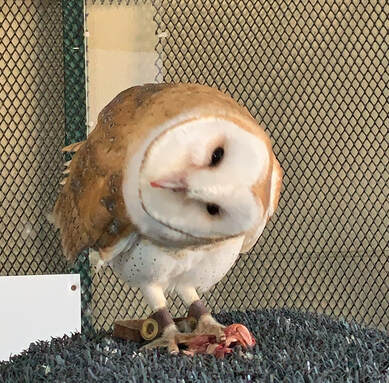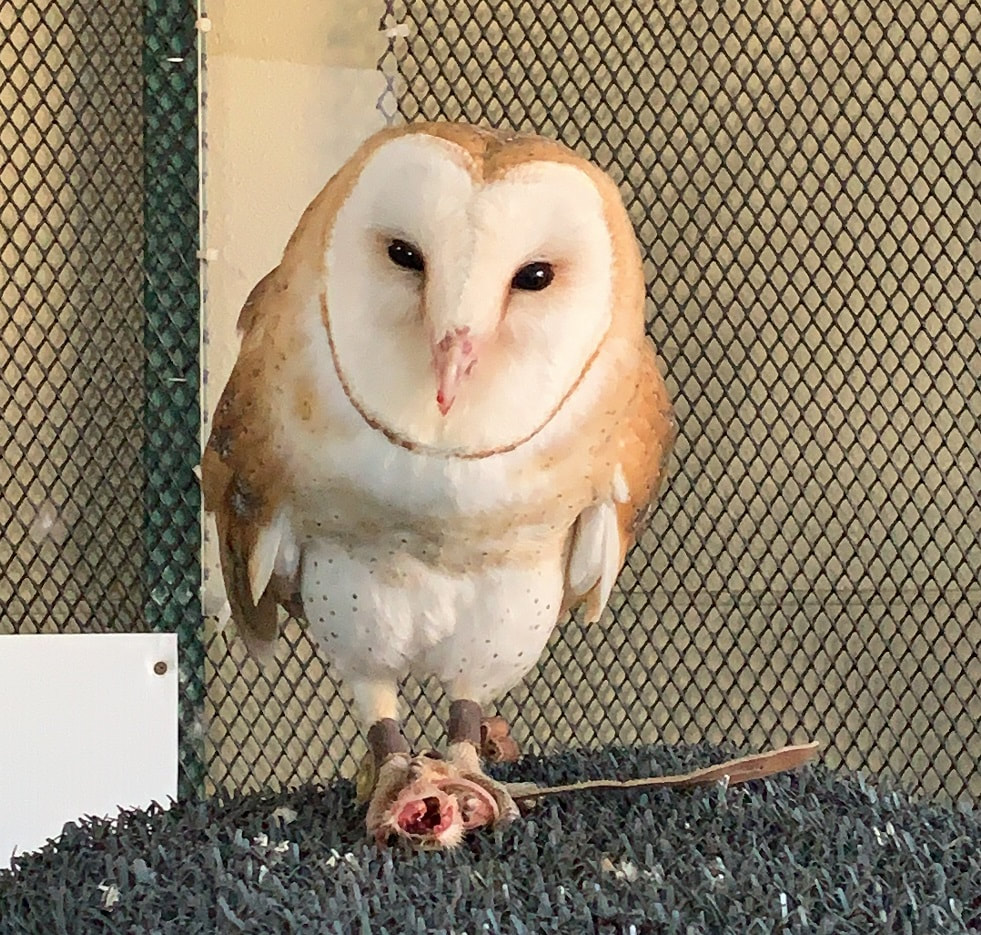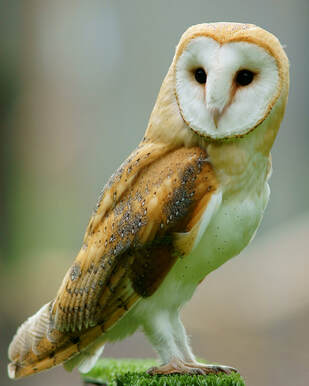Meet Ace!
- Donate support our mission to rescue, rehabilitate and educate Amazon Wishlist
-
P.O. Box 521317
Big Lake, AK 99652
-
907-892-2927
-
[email protected]
Meet Ace!
The Mysterious Barn Owl
Ace's HistoryThere have been no reports of a wild Barn Owl ever visiting Alaska, but Alaska WildBird Rehabilitation Center is excited to have a Barn Owl join our team of education ambassadors. Our new resident was a rescue from Ojai Wildlife Center in Ojai, California. The examining veterinarian deemed him non-releasable, so he was put up for adoption. Always on the search for an interesting new addition to our team, our Avian Director contacted them, and proceeded to acquire the needed state and federal permits to have him transferred to us. As a warm weather species, he will be residing indoors at our center until next spring. During this time, he will be trained to work with his handlers, and become comfortable around humans. |
Barn Owl BehaviorIn its natural habitat, the Barn Owl is a nocturnal bird. It is usually solitary except when mating. Barn Owls have perhaps the keenest hearing of any animal, enabling this nocturnal lifestyle. Their ears are set asymmetrically in the skull. In addition, they have feathery flaps in front of the ear openings that can be moved to assist the satellite dish shaped facial disk to pinpoint the incoming sound of a mouse squeak or leaf rustle. The owl will then fly to the sound and snap its beak, which momentarily stops the prey in its tracks, at which time the owl swoops in for the kill. Barn Owls hunt a wide variety of food items, mostly small mice and voles but also insects, larger mammals such as rabbits and bats, some birds and even the occasional fish. For some reason the primary avian prey are House Sparrows and Starlings, both invasive in North America. Whatever they hunt, it is usually not moving when caught. The variety of prey is useful because the Barn Owl has rapid digestion and will eat more each day for its size than any other owl, up to 50% of its body weight; more than twice the diet of similarly sized owls. Fun fact: those same ear flaps can be closed to block loud noises. |
Barn Owl HabitatBarn Owls are one of the most widely dispersed bird species, being found in nearly all temperate or warm locations around the world on all continents except Antarctica.
They do not live in very cold, high altitude or dry habitats, preferring some trees or buildings for roosting near open fields and brushy meadows. Before humans came on the scene to provide barns, chimneys, alcoves and other roost locations, they used (and still do) cliff walls, old ground squirrel burrows in soft banks and even the old nests of corvids and hawks. They generally are not migratory, but in some in more northerly locations may move a bit seasonally to avoid cold weather and to find food. Fun fact: no other North American owl spends do much time near humans yet is so rarely seen. |



